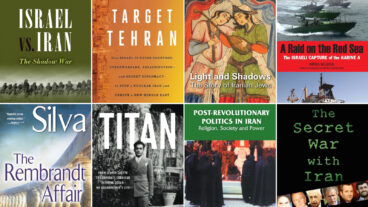Eilat’s rapid development from a collection of desert shacks into a thriving international tourist resort was one of Israel’s major achievements in its first 60 years.
Unless you are a bird, that is.
“Where you now see the airport, hotel complexes and shopping malls used to be a major stopover on the migratory path between Eurasia and Africa. Nowadays, none of the original salt marshes remain,” points out Prof. Reuven Yosef, director of the International Birding and Research Center in Eilat (IBRCE).
In 1994, Yosef acquired a 64-hectare strip of wasteland garbage dump east of the expanding town. Begging soil from local earthmoving contractors to bury the tip, he built a salt lake stocked with brine shrimp and fed by nutrient-rich effluent from the local sewage works. Fresh water was piped from the city’s desalination plant for a freshwater lake, and the native plants that thrived in the original salt marsh were re-seeded with help from the Jewish National Fund.
Only eight percent the area of the original marshes, the IBRCE sanctuary has slowly transformed into an irrigated ornithological paradise supporting a high density of plants and plenty of food for the birds during their temporary roost – the only food for hundreds of miles in any direction.
“Half a billion birds pass through the area every season. In the spring, they have to stop here to refuel, or may perish,” Yosef explains.
As the days lengthen, swirling clouds of exhausted, sun-baked avians en route from the Sahel, Sahara and Sinai deserts – many with little remaining fat or muscle – descend on the lifesaving oasis.
Eilat lies at the fulcrum of the densest flyway in the world, on the sole land bridge between Africa, Asia and Europe. Without the sanctuary saving untold millions of migratory birds, the ecosystems of three continents could be threatened by growing insect populations.
This May, The Council for a Beautiful Israel presented the Indian-born ornithologist, who moved to Israel aged 17, with the prestigious Magshim design award. “This award is significant for me because it’s the first time this government institution has recognized the environmental importance of what we’re doing. This is the first ‘green’ project to receive this award – all the previous recipients were campuses and architects,” notes Yosef, who already holds 21 international conservation awards and has published some 200 scientific papers and six books on avian issues.
“It’s a sign that Israel has woken up at last,” he ascertains.
Yosef says that he can feel a groundswell of local interest in the project, and the environment in general. “Up to 2002, 80 percent of the sanctuary’s visitors were from overseas and only 20 percent Israelis. Now the ratios have switched. We give lectures at the center every day, bringing the science directly to the public.”
Occasional flash floods that thunder down the surrounding wadis can be destructive, but real estate developers pose the greatest threat to the sanctuary as local land values surge.
“It has not been an easy fight. As long as the area was a garbage dump no-one minded, but when they saw what we did with the dump, Israeli entrepreneurship kept cropping up,” he notes, diplomatically.
The sanctuary has been the target of repeated vandalism, but each time, the determined Yosef fought back. He rebuilt his office using fireproof materials, restored the damaged landscape and carried on with his research.
Fortitude is one of the stocky, bearded professor’s greatest assets. He saw active service as an officer in an elite IDF fighting unit, was wounded and invalided out of the army in 1979 before taking up studies as an aspiring ornithologist at the University of Haifa, Ben Gurion University of the Negev (BGU) and Ohio State University, carrying out field research at the Archbold Biological Station in Florida and at Cornell under renowned biologist Tom Eisner.
A faculty member of BGU’s Department of Life Sciences, he will be heading an international ornithology program at the BGU Eilat campus next year. His students from the Arava Institute for Environmental Studies – this year hailing from India, Mongolia, Spain, Denmark and Israel – help with the field research. “We are trying to understand the birds’ basic needs as a population,” he explains.
The IBRCE is playing an integral role in a major NASA-correlated global project that is revealing changes in birds’ migratory patterns, weight and physical conditions as climate change affects avian populations. Yosef’s team has noted fewer passerines with each succeeding year, while many species are losing weight and populations of endangered birds like corncrakes and wrynecks are declining. Furthermore, some birds are migrating earlier and some later, and may miss their breeding season.
In recent years, a similarly-sized sanctuary has opened some 500 meters to the east on the Jordanian side of the border, fed by the sewage tanks of Eilat’s counterpart resort Aqaba and run by two of Yosef’s former students, Khaled Nasser and Dr. Fares Khoury.
Birds, like scientists, recognize no international borders. “My dream is one day to unite the sanctuaries without a fence running between them,” says Yosef.












